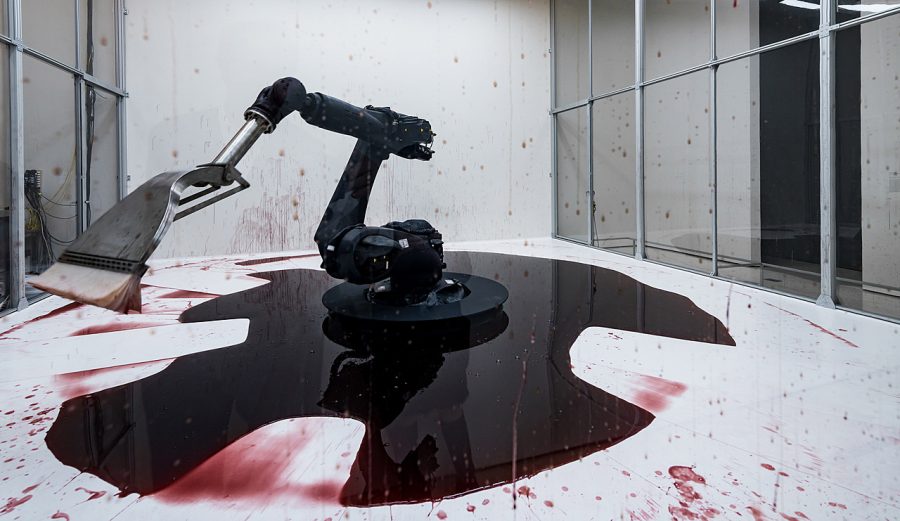Art for Anyone: Can’t Help Myself
December 16, 2021
On November 4th, 2016 The Guggenheim museum launched an exhibition entitled Tales of Our Times. The point of the exhibition was to have artists challenge the conventional understanding of place. Artists would target specific places, such as their hometowns or groups of uninhabited islands, or even abstract ideas like boundaries and territories. One of the most memorable pieces from Tales of Our Times, was entitled Can’t Help Myself.
Commissioned by the Guggenheim Museum, Can’t Help Myself was made by the Chinese duo Sun Yuan and Peng Yu. The two formed a partnership in 2000 and went on to make installations that challenged both political and emotional authority. Some of their larger pieces, Can’t Help Myself included, comment on the modern understanding and exercise of different political constructs such as freedom, democracy, and nation state. They achieved this statement with Can’t Help Myself in a way many would consider unconventional.
The piece itself was constructed of two parts: the robot and the liquid. The robot was an industrial one, reprogrammed with 32 different movements and visual-recognition sensors. The liquid was dyed water and cellulose ether. Using the programmed movements, the robot’s one job was to contain the liquid. It would do this by sensing when the red liquid had gone too far and then sweeping it back towards itself. There were also additional movements programmed in, most of which made the robot seem as if it were dancing.
Can’t Help Myself was intended to convey a sense of the surveillance and warfare that surrounds border control and disputes over land. The residue left behind by every sweep represents bloodstains, invoking images of these border conflicts. Sun Yuan and Peng Yu’s website goes more in depth into this idea, stating: “Beyond the blood and lives sacrificed in border conflicts and wars, these security mechanisms affect the everyday, from surveillance cameras in urban areas to smartphones that allow us to document and share moments of our lives while monitoring and controlling our behavior. These multiple layers of surveillance point to the relationship between humans and machines; as we create machines and design programs to control them, we inadvertently become subjects of their monitoring.”
However, the meaning that Sun Yuan and Peng Yu intended wasn’t the only meaning people saw.
Can’t Help Myself moved many people in different ways. Many even felt sympathy for the robot despite knowing that it lacks the ability to feel anything. The robot slowly breaking down overtime added to what people felt for it, it created this illusion of the robot “breaking down” or becoming “tired.” When asked about the subject, many Granby Jr. Sr. High School students responded in a way that portrayed this. Isabelle Rivera stated, “He’s been working so hard for so long to try and clean himself up, and in the beginning he was so happy and excited, but as the years went on he slowed down and got tired. He’s hurting himself to keep everyone else happy.” Another student, Maya Nott, added that, “It’s as if they continuously work towards bettering themselves but can just never accomplish it on their own, they need help that they can’t manage to get. They attempt to clean up their mess just to get close and spill all over the place again. They also just seem to be getting tired of the repetitive job they continue to try and complete. They started off so determined to get better and slowly over time that burden just took them by the throat and slowly cut them off. It is a very emotional installation in my opinion. I’m not surprised so many [people] have attached feelings.”
It’s fascinating how we as humans can feel so many things towards a robot. Our ability to attach feelings, sympathize, and interpret something so simple yet so complex differently is beyond interesting, and Can’t Help Myself was an excellent example of it.

















